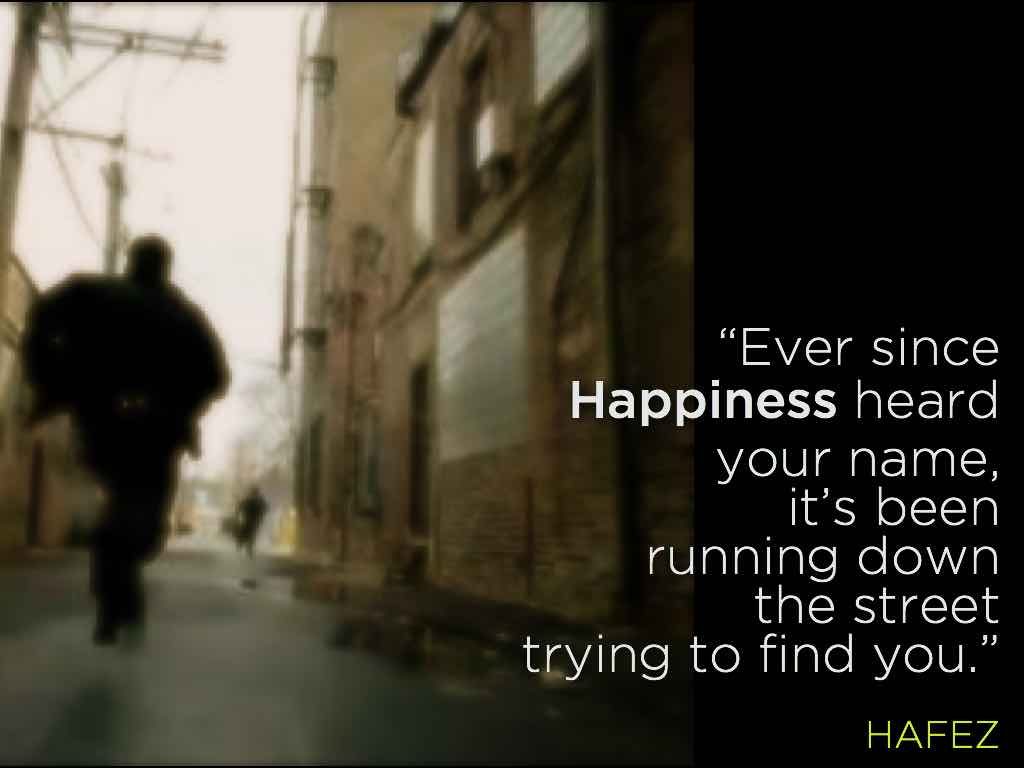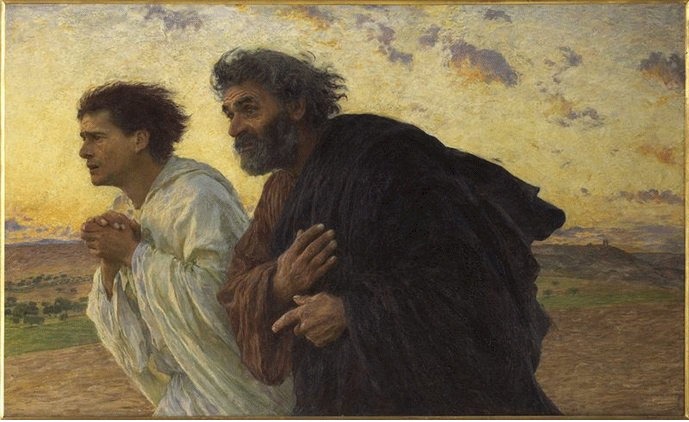This Easter homily is based on John 20:1-9.
What is remarkable about this Gospel story is the emotion that the women experienced as a result of their discovery of the empty tomb: Fear.
I wasn’t expecting that.
We are told that the women were so afraid they said nothing to anyone– exactly the opposite of what the angels had requested them to do. Of course we know that they eventually overcame their fear and disclosed their discovery to the other disciples.
Easter is supposed to bring joy, but isn’t it funny that the initial reaction of the women was fear?
There is something about us that is reluctant–if not suspicious–about good news. It’s almost as if we are more accustomed
to fear and sadness than to joy. We often end up doing what the women did after their encounter with the angel: We flee from good news!
The poet Hafez has written a beautiful line that is worth thinking and praying about:

It’s hard to believe what the poet is telling us: that happiness has been pursuing us. It’s astonishing!
Too often it doesn’t feel that way at all! Happiness seems all too elusive.
But this brings us to one important truth: Happiness is a choice,
a decision we have to make, but too often we fail to make that decision.
Imagine Happiness running down the streets in pursuit of you,
as the poet Hafez says. Why would we be running away
from Happiness? Could we be pursuing something else that we are mistaking for Happiness?
Or, is there anything in our life that is keeping us from dropping
our fear, our anger, our sadness–or whatever else is getting in the way of joy.
What would we lose if we made the choice today–right here and right now–to leave all that behind and to be happy?
Let’s think about that. And if you can, do something about it.
This Easter, make the decision to let Happiness find you.


